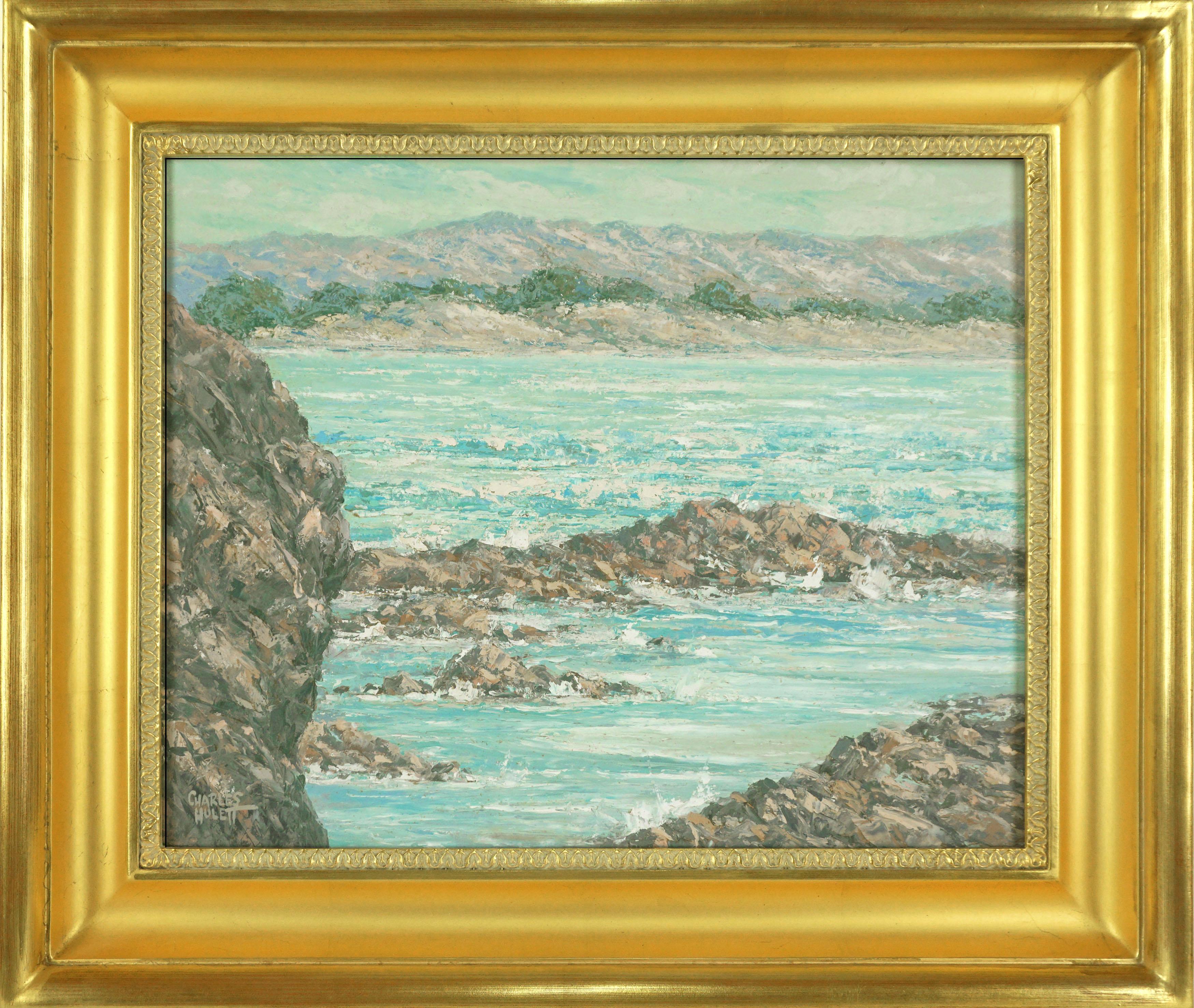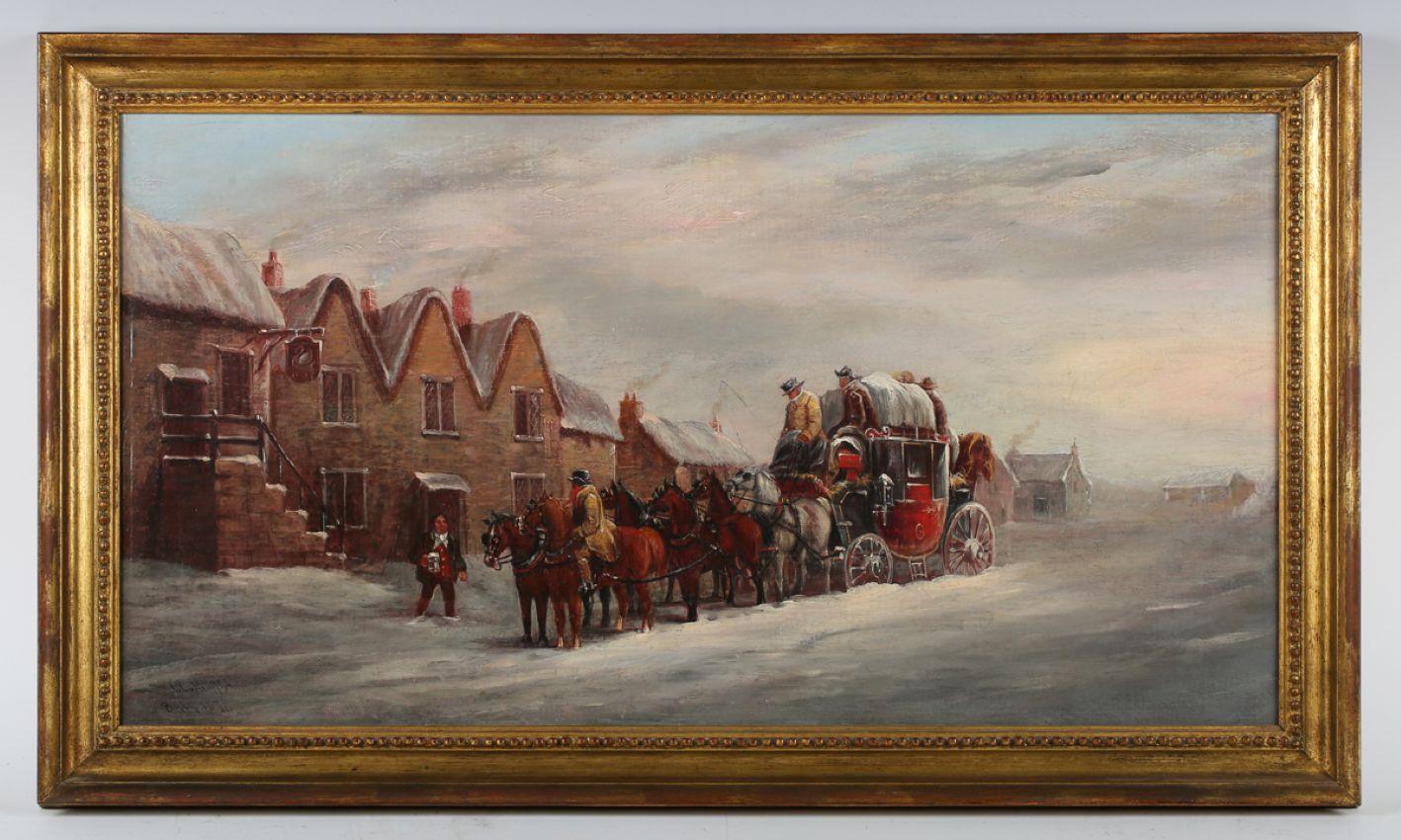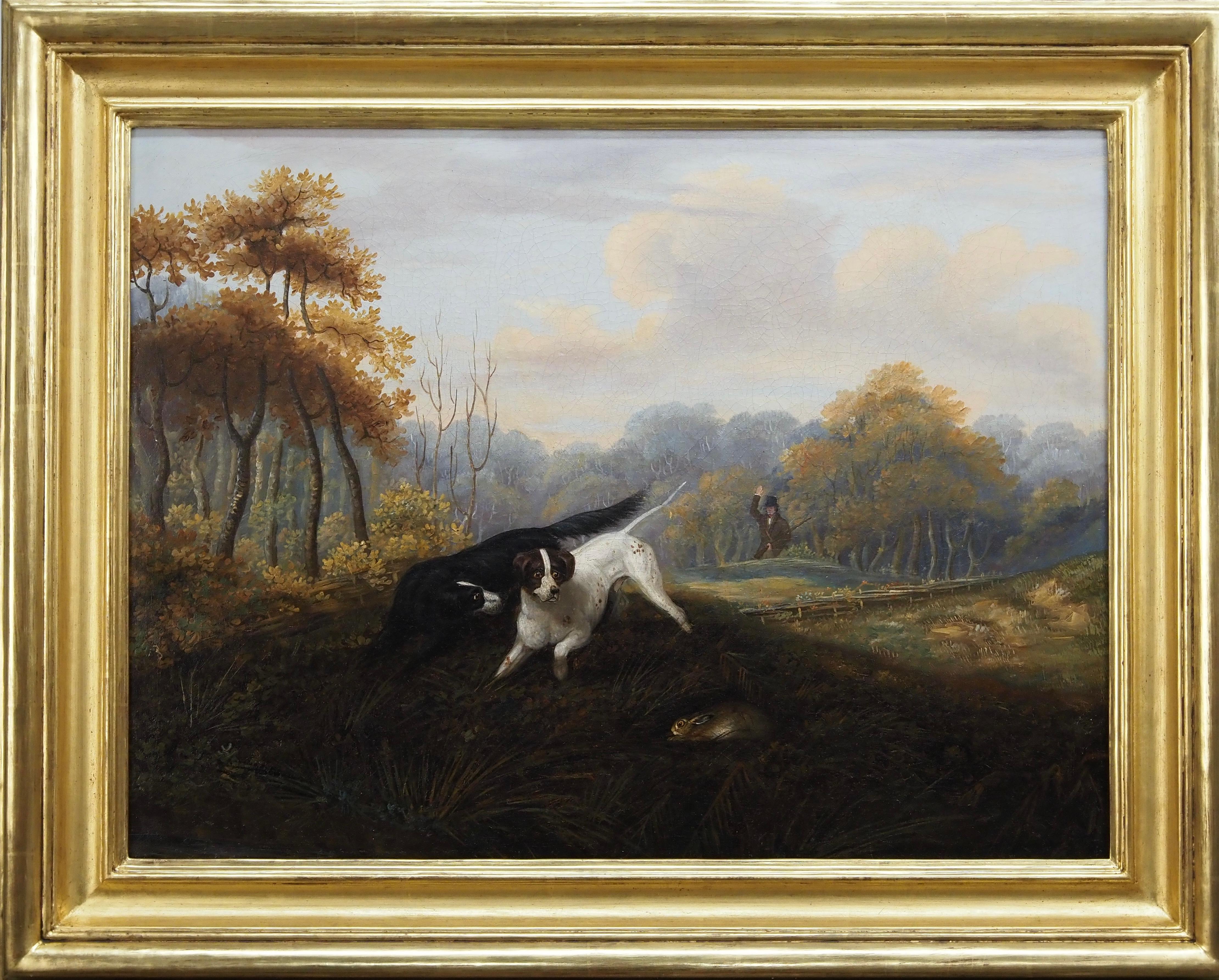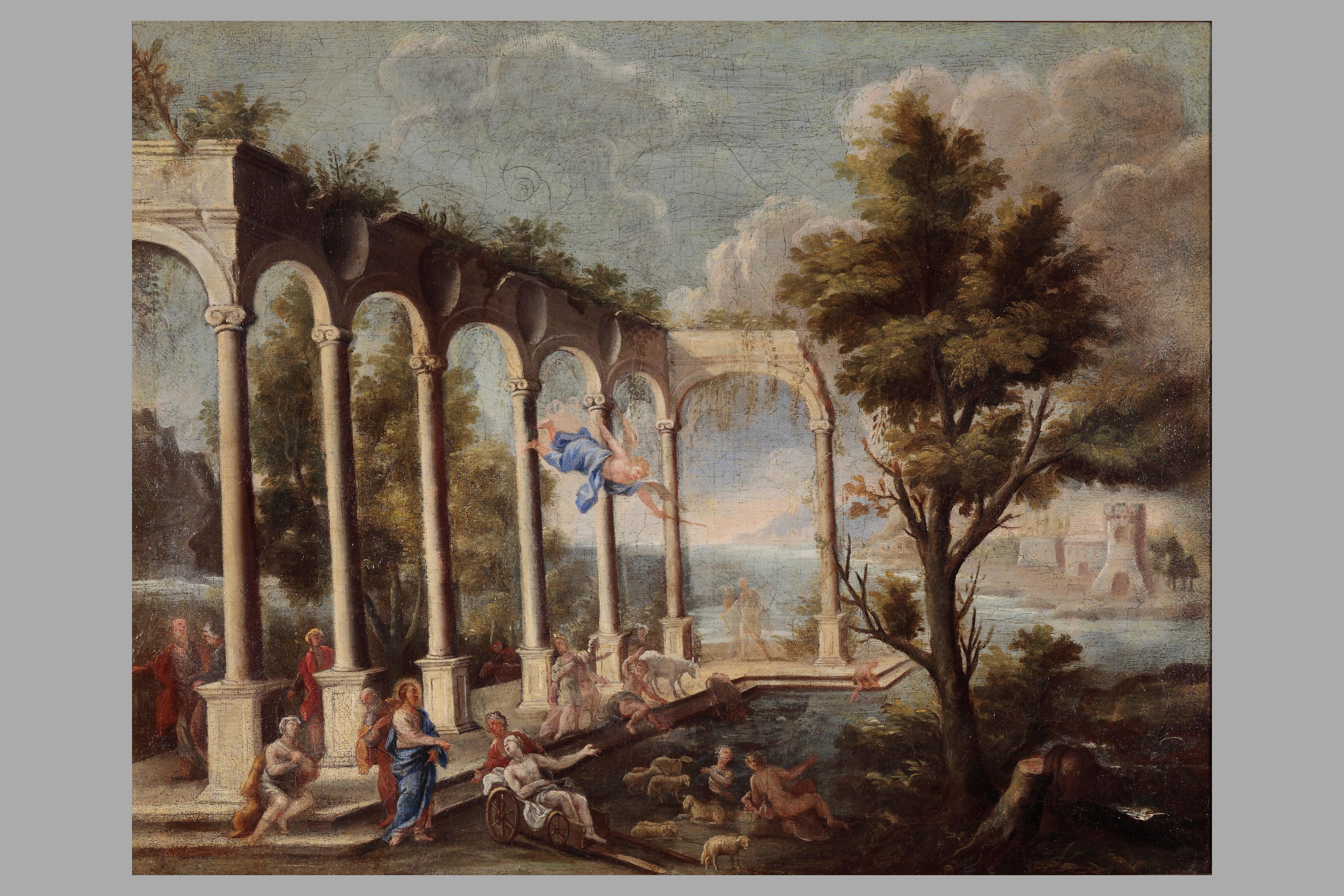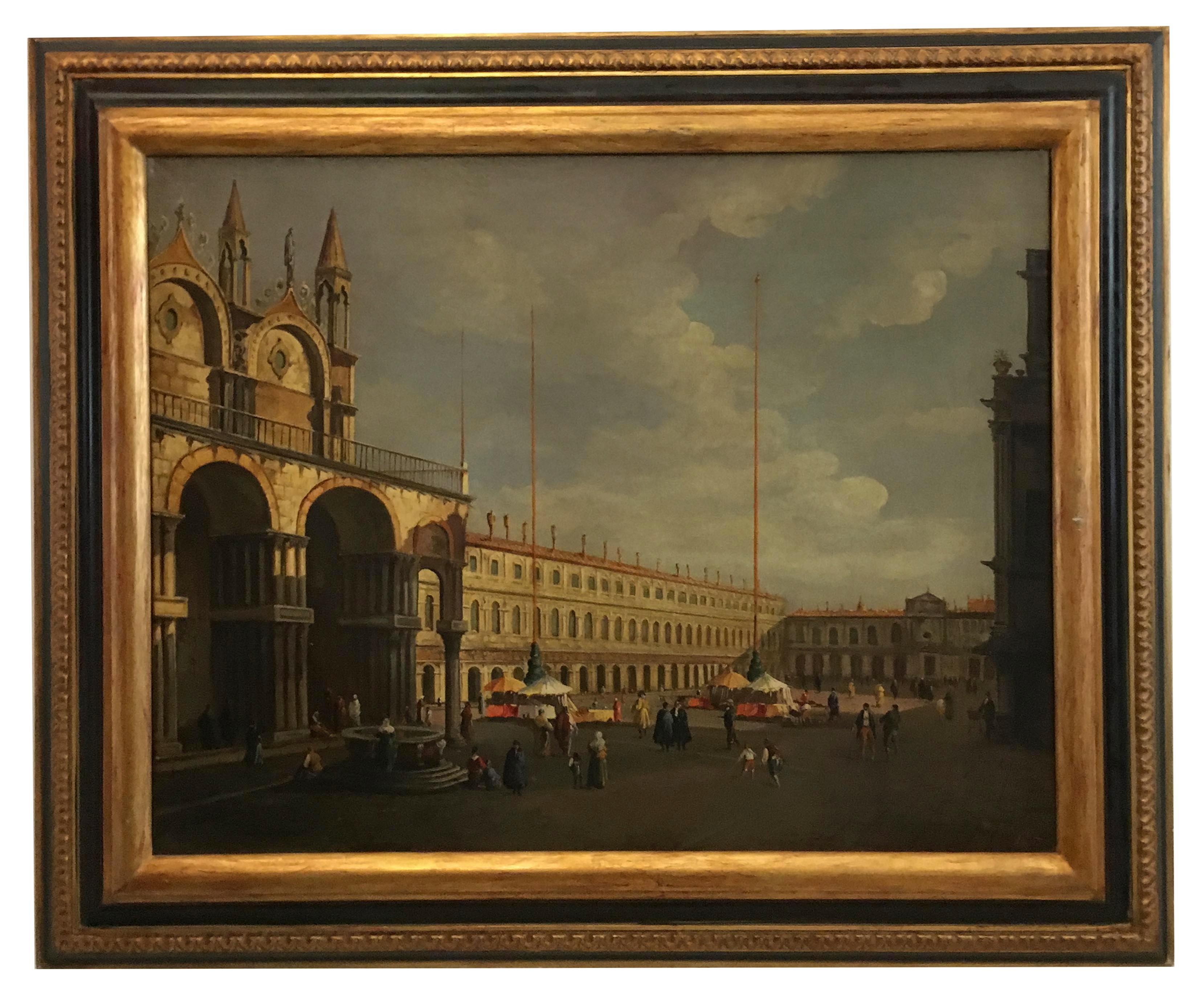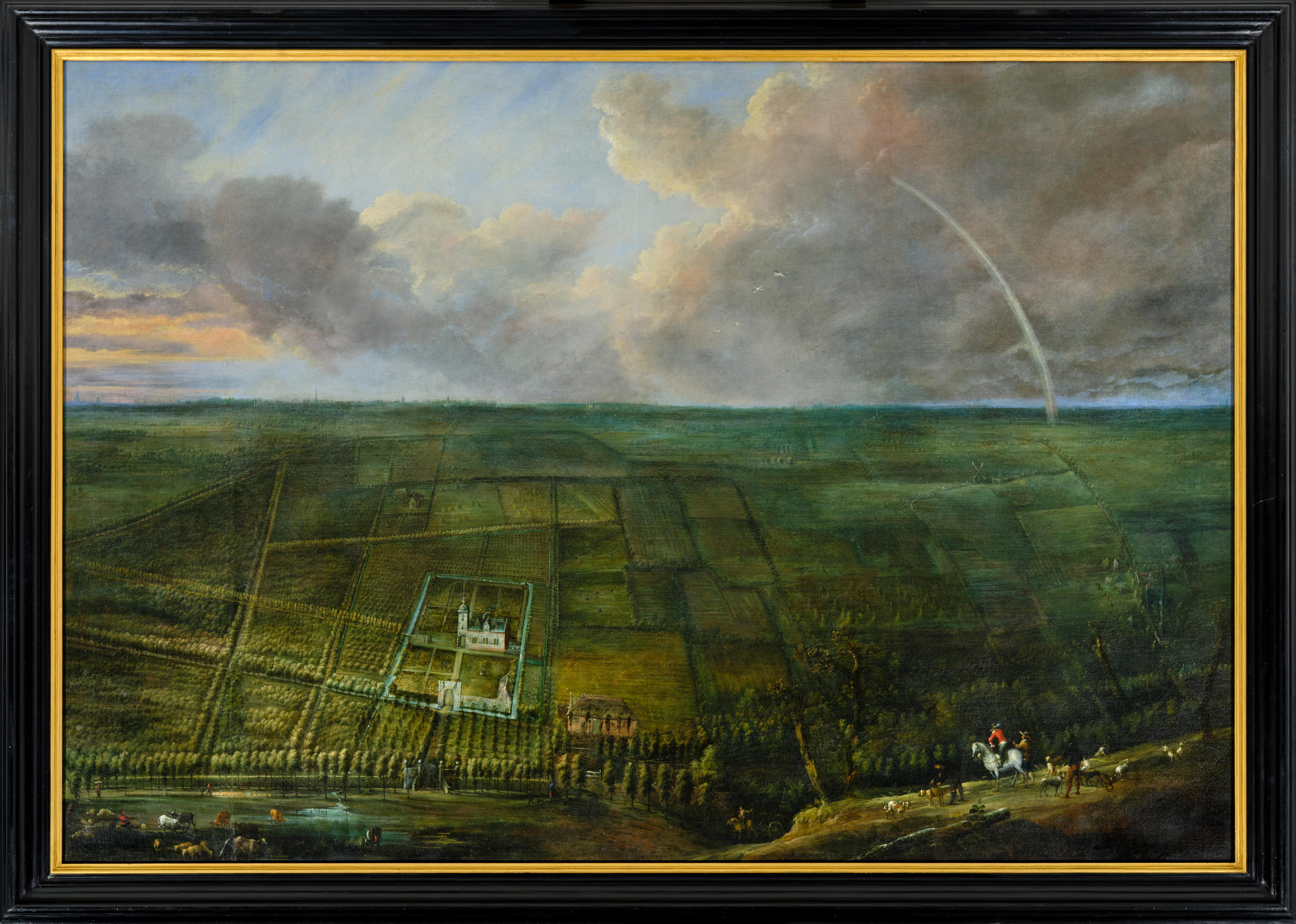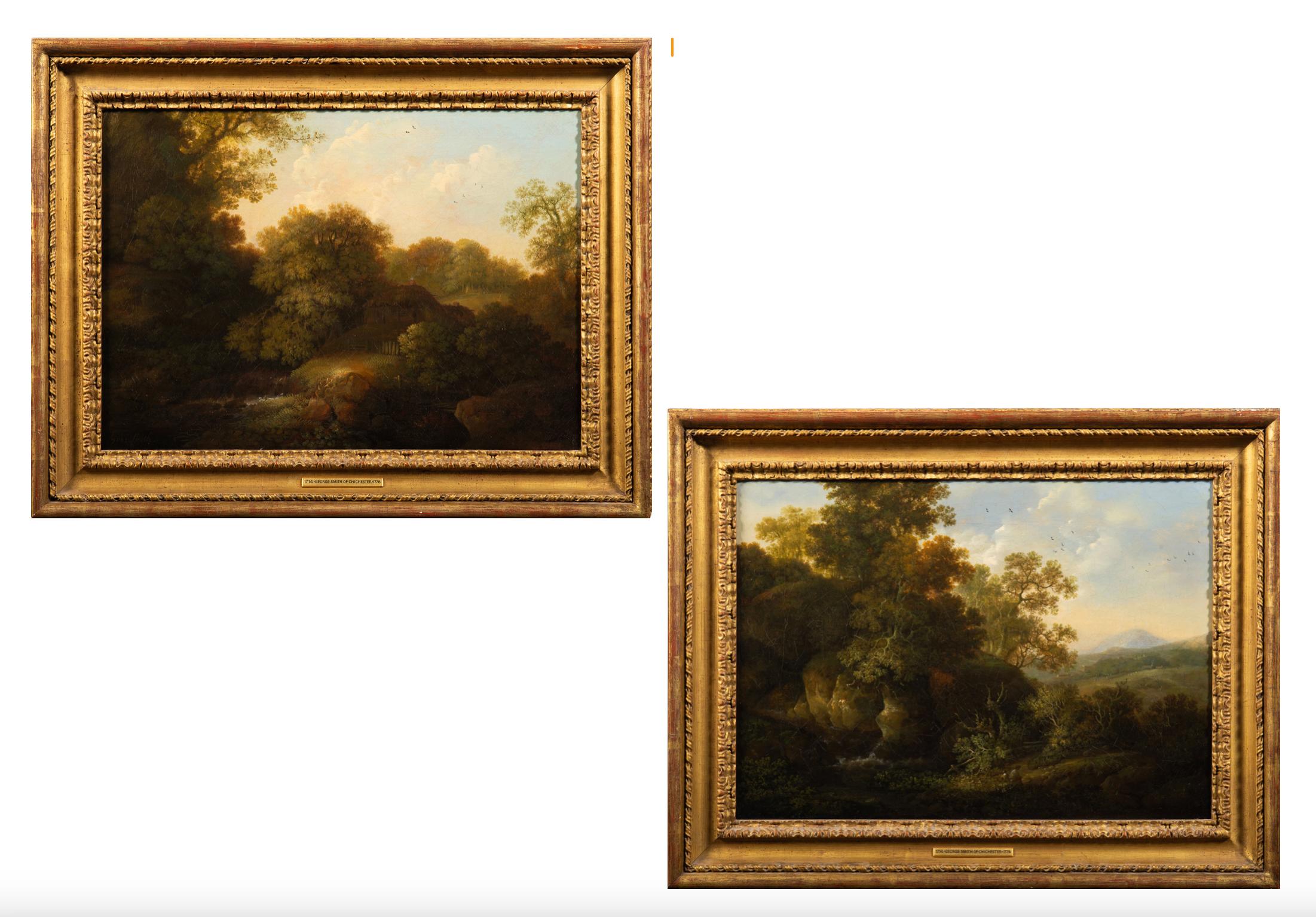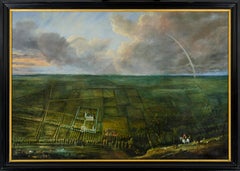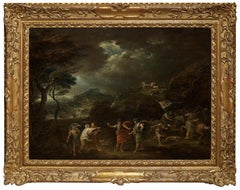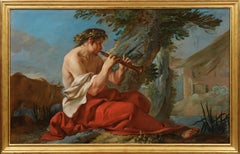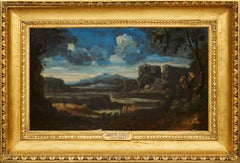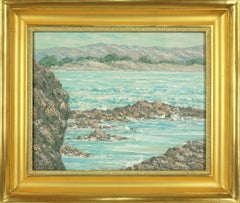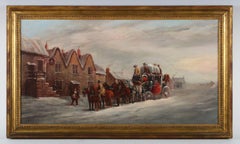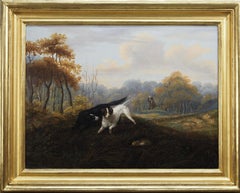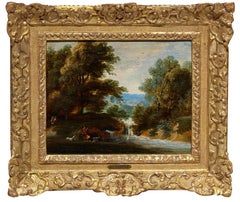
Waterfall Landscape Painting on Panel signed by Jacques d'Arthois Flemish School
View Similar Items
Want more images or videos?
Request additional images or videos from the seller
1 of 10
Jacques d'ArthoisWaterfall Landscape Painting on Panel signed by Jacques d'Arthois Flemish SchoolCirca 1660
Circa 1660
About the Item
- Creator:Jacques d'Arthois (1613 - 1686, Flemish)
- Creation Year:Circa 1660
- Dimensions:Height: 12.41 in (31.5 cm)Width: 14.18 in (36 cm)
- Medium:
- Movement & Style:
- Period:
- Condition:Monogrammed and signed on the back Louis XIV period gilded frame 20 x 24.5 cm (31.5 x 36 cm framed) This painting has been restored - condition report available upon request.
- Gallery Location:PARIS, FR
- Reference Number:1stDibs: LU156828181282
About the Seller
5.0
Vetted Professional Seller
Every seller passes strict standards for authenticity and reliability
Established in 2020
1stDibs seller since 2021
9 sales on 1stDibs
Authenticity Guarantee
In the unlikely event there’s an issue with an item’s authenticity, contact us within 1 year for a full refund. DetailsMoney-Back Guarantee
If your item is not as described, is damaged in transit, or does not arrive, contact us within 7 days for a full refund. Details24-Hour Cancellation
You have a 24-hour grace period in which to reconsider your purchase, with no questions asked.Vetted Professional Sellers
Our world-class sellers must adhere to strict standards for service and quality, maintaining the integrity of our listings.Price-Match Guarantee
If you find that a seller listed the same item for a lower price elsewhere, we’ll match it.Trusted Global Delivery
Our best-in-class carrier network provides specialized shipping options worldwide, including custom delivery.More From This Seller
View AllPanoramic View of an Estate on the edge of the Sonian Forest (near Brussels)
Located in PARIS, FR
This museum-sized painting takes us over an estate on the outskirts of the Sonian Forest near Brussels, temptingly identified as the Ter Coigne estate in Watermael (of which only some heavily modified buildings remain today).
This gigantic "bird's eye view" is certainly a workshop painting, executed around 1650 by several artists under the supervision of Lucas van Uden...
Category
1650s Old Masters Landscape Paintings
Materials
Linen, Oil
Macbeth and the Three Witches a Painting on Panel by Francesco Zuccarelli
By Francesco Zuccarelli
Located in PARIS, FR
This painting, created during Zuccarelli's stay in England, represents the decisive moment when Macbeth, together with Banquo, meets the three witches who announce that he will be Ki...
Category
1760s Old Masters Landscape Paintings
Materials
Oil, Wood Panel
Mercury and Io, a rediscovered painting by Jean-Baptiste Marie Pierre (ca. 1740)
Located in PARIS, FR
We would like to thank Mr. Nicolas Lesur for confirming the autograph nature of the entire composition after a direct examination of the painting on November 27, 2024.
This painting...
Category
1740s Old Masters Figurative Paintings
Materials
Canvas, Oil
Italian Landscape with Jack Players, a painting by Gaspard Dughet (1615 - 1675)
By Gaspard Dughet
Located in PARIS, FR
Here Gaspard Dughet offers us an idyllic vision of the Roman countryside. The stages follow one another in a perfectly structured composition, revealing here a lake, there travellers walking along, gradually leading our eye to the blue horizon. But behind its classical composition, this landscape is particularly interesting because of three anthropomorphic details that the artist has hidden, opening the way to a radically different interpretation...
1. Gaspard Dughet, a landscape artist in the light of Poussin
Gaspard Dughet was born on June 4th, 1615 in Rome where his father, of French origin, was a pastry cook. He was probably named Gaspard in honour of his godfather Baron Gaspard de Morant, who was, or may have been, his father's employer. His older sister Jeanne married the painter Nicolas Poussin (1594 - 1655) on September 1st, 1630. The young Gaspard was apprenticed with his brother-in-law at the beginning of 1631, which led his entourage to name him Gaspard Poussin. The first preserved works of the painter date from the years 1633-1634 and were painted in Poussin’s studio.
Around 1635, Gaspard Dughet became emancipated and began to frequent the Bamboccianti circle. In 1636, he became friends with the painter Jean Miel (1599 - 1656), but also with Pier Francesco Mola (1612 - 1666) and Pietro da Cortona (1596 - 1669).
This was also the time of his first trips throughout Italy. The painter, although of French origin, appears never to have visited France. In 1646 he settled permanently in Rome. A recognized painter with a solid book of orders, he remained faithful to landscape painting throughout his life, alternating between cabinet paintings and large decorative commissions, using both oil and fresco.
Nailed to his bed by rheumatic fever at the age of 58, he died on May 25, 1675.
2. Discovering an idealized landscape
Beyond a relatively dark foreground that takes us into the landscape, we discover a vast bluish horizon: a plateau surrounded by deep ravines advances to the right, overhanging an expanse of water that sparkles below. A road winds through a mountainous mass as if leading us to the fortress that crowns it; another town appears in the distance at the foot of three conical mountains.
The composition is rigorous, mineral, and structured by geometric volumes. The various stages in the landscape lead one to the next attracting the eye towards the horizon located in the middle of the canvas. The general impression is that of a welcoming and serene nature.
In many places the paint layer has shrunk, or become transparent, revealing the dark red preparation with which the canvas was covered and accentuating the contrasts.
Human presence is limited to three jack players, leaning against a mound in the foreground. Their long garments, which may evoke Roman togas, contribute to the timelessness of the scene.
Close examination of the canvas reveals two other travellers on the path winding between the rocks. Made tiny by the distance, their introduction in the middle register, typical of Dughet's art, lengthens the perspective.
While it is difficult to date the work of a painter who devoted his entire life to the representation of landscapes, it is certain that this painting is a work from his later years. The trees that occupied the foreground of his youthful compositions have been relegated to the sides, a stretch of water separates us from the arid mountains counterbalanced by two trees represented on the opposite bank. The introduction of this stretch of water in the middle of the landscape betrays the influence of the Bolognese and in particular of the Dominiquin (1581 - 1641)
A number of similarities with a drawing in the British Museum might suggest a date around 1656-1657, since, according to Marie-Nicole Boisclair , it has been compared with the Prado's Landscape with the Repentant Magdalene, painted at that period.
3. Three amazing anthropomorphic details
While some late Renaissance landscapes offer a radical double reading, allowing one to see both a face or a human body behind the representation of a landscape, it seems interesting to us to hypothesize that Gaspard Dughet had fun here by slipping in a few details that, taken in isolation, evoke human or animal figures.
We will give three examples, looking closely at a cloud, the trunk of a broken tree and the top of a cliff.
The main cloud could thus evoke a Christ-like face or that of an antique god...
Category
1650s Old Masters Landscape Paintings
Materials
Oil
Gathering in antique Ruins, a monogrammed painting by Jan van Haensbergen
By Jan Van Haensbergen
Located in PARIS, FR
Jan van Haensbergen was a painter of the Dutch Golden Age and a pupil of Cornelius van Poelenburgh (Utrecht 1594 - 1667). The painting we are presenting is inspired by Poelenburgh’s landscapes from his Italian sojourn. The dreamlike atmosphere of this Gathering in antique ruins appealed to us. Against a backdrop of antique ruins, three draped characters (perhaps bathers) are sitting in a circle, greeting a fourth character walking towards them.
Their tranquility contrasts with the bustle of the other characters in the background. They constitute a vivid illustration of otium, this leisure time that allows us to realize our full potential. With this Arcadian landscape, Jan van Haensbergen invites us in turn to leave the hustle and bustle of everyday life behind, to take a break, to enjoy the present moment chatting with close friends…
1. Jan van Haensbergen, a landscape and portrait painter of the Dutch Golden Age
Jan van Haensbergen was born in 1642 in Gorinchem, a town in southern Holland to the east of Rotterdam. He was a pupil of Cornelius van Poelenburgh, and began by painting landscapes inspired by those of his master, in an Italianate style. Between 1668 and 1669, he was registered at the Guild of Saint Luke in Utrecht.
In 1669, he moved to The Hague, where he joined the Confrérie Pictura, an artist society founded in 1656. His portraits, which became his main activity as a painter after settling in The Hague, were strongly influenced by Caspar Netscher (Prague or Heidelberg 1639 - The Hague 1684), whom he met in The Hague and whose son Constantijn became his son-in-law by marrying his daughter Magdalena.
In addition to his work as an artist, Van Haensbergen was also an art dealer, probably helped by his appointment as Dean of the Confrérie Pictura, where he also teached.
2. Description of the artwork and related paintings
This painting seems to us to be a kind of allegory of otium, that quiet bliss promised by Epicurus. It might even evoke an Epicurean proverb: "It is better to lie on the naked ground and be at ease, than to have a golden carriage and a rich table and be worried" .
Three draped young people - two men and a woman in the background - are seated in a circle, greeting a fourth figure walking towards them, hair disheveled and body draped in a towel as if drying off after a bath, indicating the need for prior purification to fully enjoy this rest. Their nonchalance contrasts with the bustle of the various characters in the background.
The composition is punctuated by successive diagonals, and opens onto a landscape on the right, with a succession of mountainous planes. This painting is typical of the Italianate works produced by Van Haensbergen in the 1660s under the influence of Cornelis van Poelenburgh...
Category
17th Century Old Masters Landscape Paintings
Materials
Oak, Oil
Stag Hunting in the Vicinity of Nuremberg by a German Artist Peter von Bemmel
Located in PARIS, FR
This small landscape shows a hunting scene: two riders are chasing a stag with their dogs at the edge of a forest. Signed by Peter von Bemmel, it is typical of the production of this...
Category
1720s Old Masters Landscape Paintings
Materials
Copper
You May Also Like
Mid Century Monastery Beach Carmel California Impressionist Oil Painting
Located in Soquel, CA
Mid Century Carmel Monastery Beach California Impressionist Oil Painting
Beautiful impressionist style painting of iconic Mon...
Category
1950s Old Masters Landscape Paintings
Materials
Masonite, Oil
Escuela Francesa (XIX) - Les cascatelles de Tivoli (Tras Jean Honoré Fragonard)
Located in Sant Celoni, ES
La obra no va firmada, es de autor anónimo
Se presenta enmarcada la obra
El estado de la obra se puede ver, es aceptable, solo presenta alguna leve falta (apreciable en las fotogra...
Category
Early 19th Century Old Masters Landscape Paintings
Materials
Oil
19th century oil painting, Mail coach in snow, oil, John Charles Maggs
By John Charles Maggs
Located in York, GB
A fine 19th century oil painting on canvas depicting a Mail coach outside the Swan Inn, in the snow, signed, inscribed and dated 'Bath 1878' lower left, The size being 36cm x 66cm,...
Category
19th Century Old Masters Landscape Paintings
Materials
Oil
Two spaniels working with a huntsman beyond
Located in Stoke, Hampshire
William Jones (c.1798-1860)
Two spaniels working with a huntsman beyond
Oil on canvas
Canvas Size - 16 x 21 in
Framed Size - 21 x 26 in
William Jones’s wor...
Category
19th Century Old Masters Landscape Paintings
Materials
Oil
$3,765 Sale Price
56% Off
18th Century By Vincenzo Re The Pool of Bethesda Oil on Canvas
Located in Milano, Lombardia
Vincenzo Re (Parma, Italy, 1695 - Naples, Italy, 1762)
Title: The Pool of Bethesda
Medium: Oil on canvas
Dimensions: without frame 50 x 62 cm - wi...
Category
18th Century Old Masters Landscape Paintings
Materials
Canvas, Oil
Bedouin at Prayer, Orientalist Oil Painting on Panel by Rudolf Ernst
By Rudolf Ernst
Located in Long Island City, NY
This painting by Orientalist artist Rudolf Ernst depicts a Muslim man in quiet contemplation during prayer. He kneels in solitude in the vast desert as the light fades around him. Ma...
Category
1890s Old Masters Figurative Paintings
Materials
Oil, Wood Panel
